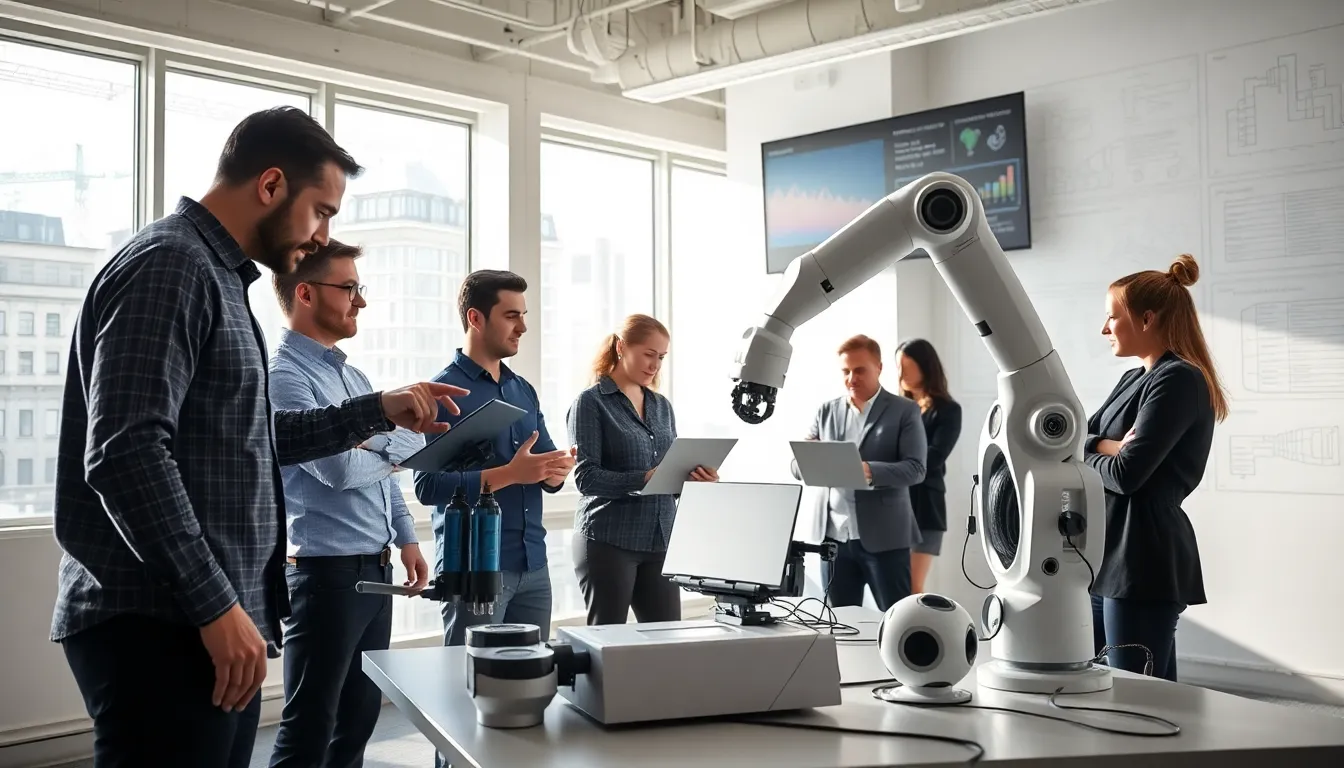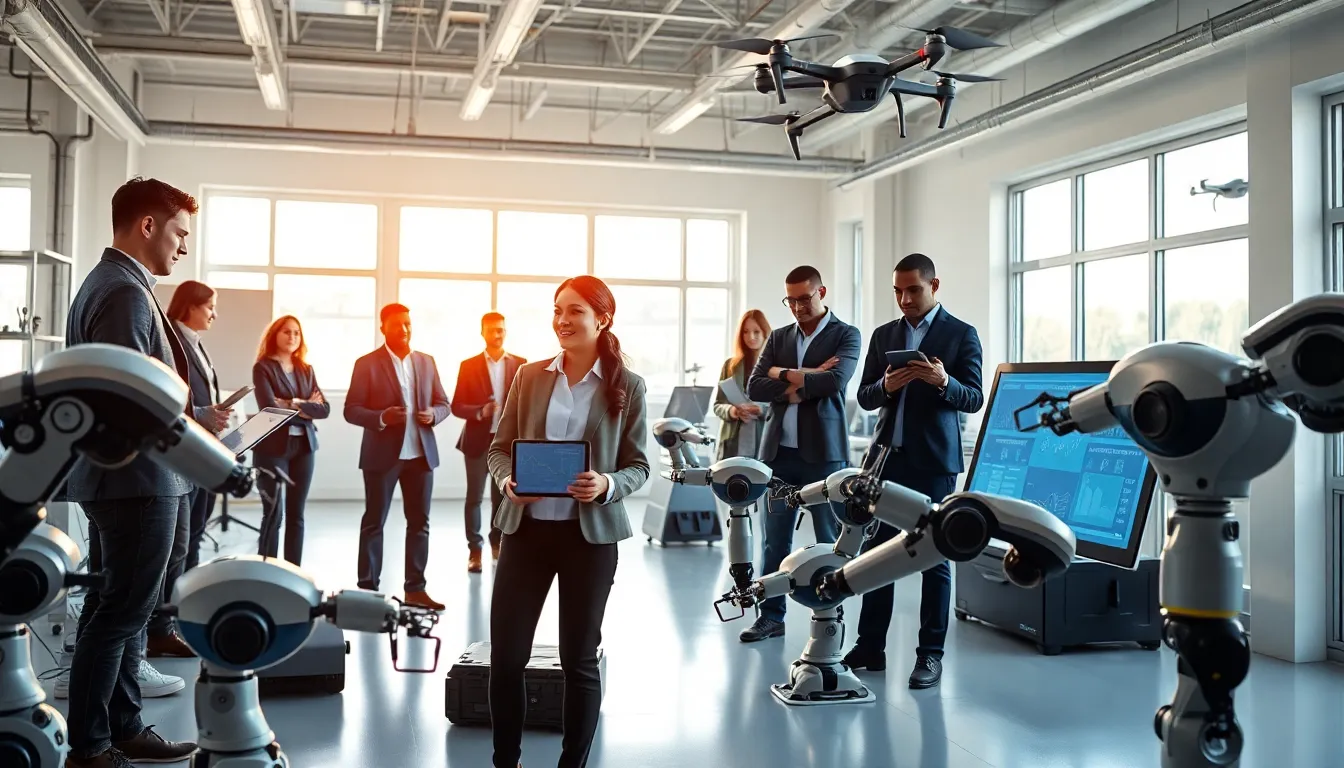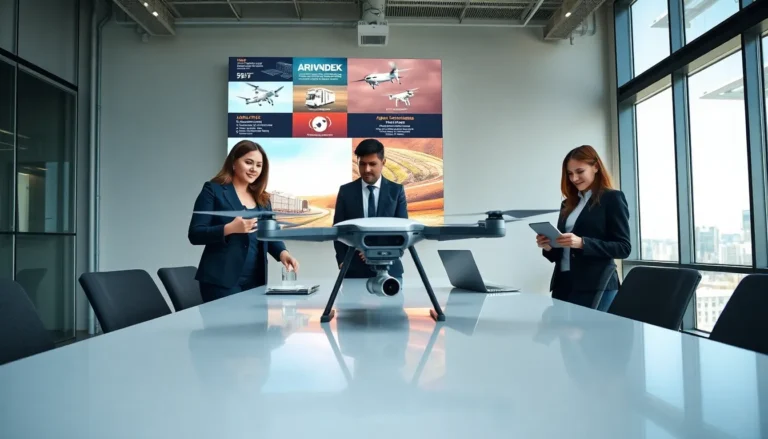Table of Contents
ToggleImagine a world where robots take on mundane tasks while humans tackle creative challenges. No, this isn’t just a sci-fi movie script: it’s the reality unfolding in American robotics today. With each passing year, these mechanical marvels evolve, proving that metal can indeed handle more than just heavy lifting. From factories to homes and even hospitals, robotics revolutionizes our way of life. So, buckle up as we dive deep into the fascinating landscape of robotics in America.
The Evolution of Robotics in America

Historical Milestones
The journey of robotics in America began in the mid-20th century, when the first programmable robots were introduced. These early machines, while primitive by today’s standards, set the stage for what was to come. Fast forward to the 1980s, when the introduction of industrial robots marked a significant shift in manufacturing processes. Companies began adopting robotic arms for tasks like welding and painting, which enhanced efficiency and precision.
As technology advanced, so did the capabilities of robots. The introduction of the Internet and artificial intelligence in the late 1990s and early 2000s allowed robots to perform complex tasks with greater adaptability. Today, American robotics stands on the shoulders of these historical milestones, continuously evolving to meet new challenges.
Key Technological Advances
Among the most notable advancements in robotics is the development of artificial intelligence. Machine learning algorithms empower robots to learn from their environments and make decisions accordingly. Add in sensors that provide real-time data, and you have robots that can navigate complex terrains.
Also, the rise of collaborative robots, or cobots, represents a game-changer. These machines are designed to work alongside humans, enhancing productivity while reducing workplace hazards. This blend of human intuition and robotic precision is one of the most exciting frontiers in the field.
Current Trends in American Robotics
Industrial Automation
In the manufacturing world, industrial robots have become commonplace. With advancements like greater dexterity and vision systems, these robots can handle increasingly complex tasks. Enterprises leverage robotics to streamline production, minimize errors, and reduce labor costs. This trend shows no signs of slowing down, as companies strive for efficiency and reliability.
Medical Robotics
York hospitals have embraced robotic-assisted surgeries. Surgeons now use robotic systems to enhance precision during operations, minimizing patient recovery time. Beyond surgical applications, robots in healthcare assist with patient care, rehabilitation, and even prescription management. This burgeoning field exemplifies how robotics can significantly improve quality of care and transition smoothly into everyday health practices.
Consumer Robotics
In households across the nation, consumer robots like robotic vacuum cleaners and lawn mowers have become household names. These bots take mundane chores off our plates, showcasing how automation can enhance everyday life. As technology evolves, expect smarter home robots that can adapt to personal preferences and seamlessly integrate into your lifestyle.
Challenges Facing American Robotics
Regulatory and Ethical Issues
While the advancements in robotics are indeed remarkable, they often stir up concerns related to regulation and ethics. Questions arise around the liability when a self-driving car malfunctions, or the data privacy implications of surveillance robots. Addressing these issues requires a smart approach from lawmakers, ensuring that innovation flourishes while safeguarding the interests of the public.
Workforce Implications
As robots become more prevalent, workforce dynamics are inevitably changing. While automation creates new job roles in programming and maintenance, it also renders some traditional positions obsolete. Society must grapple with reskilling workers to fill these innovative roles. A proactive approach is vital to mitigate the fears that come with this rapid transformation.
The Future of Robotics in America
Emerging Innovations
The future of American robotics is brimming with potential. Expect significant strides in autonomous vehicles, drones, and AI-driven companion robots. These innovations can transcend industries, revolutionizing logistics, agriculture, and personal care. Not to mention, advancements in soft robotics and bioengineering could pave the way for robots that mimic human movements and behavior even more closely.
The Role of Education and Research
To keep pace with technological advancements, education plays a crucial role. Universities and research institutions are continuously developing programs to prepare the workforce for the future landscape. Collaboration between academic institutions and industries will be critical for fostering innovation. Emphasis on STEM education from an early stage can also cultivate a generation equipped with the skills to thrive in a robotic world.






